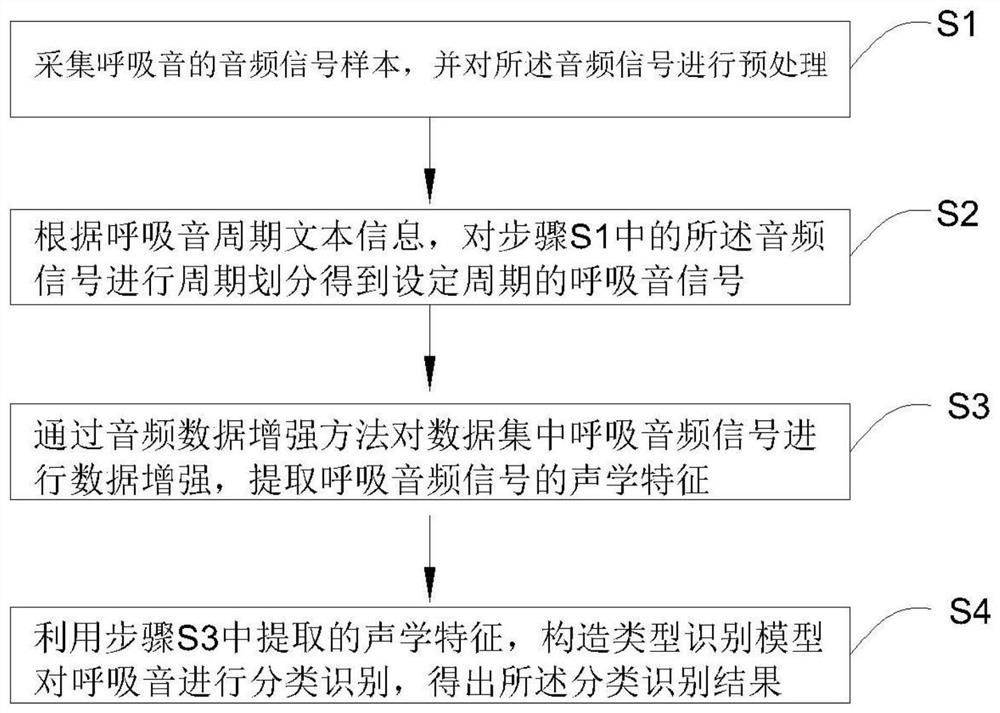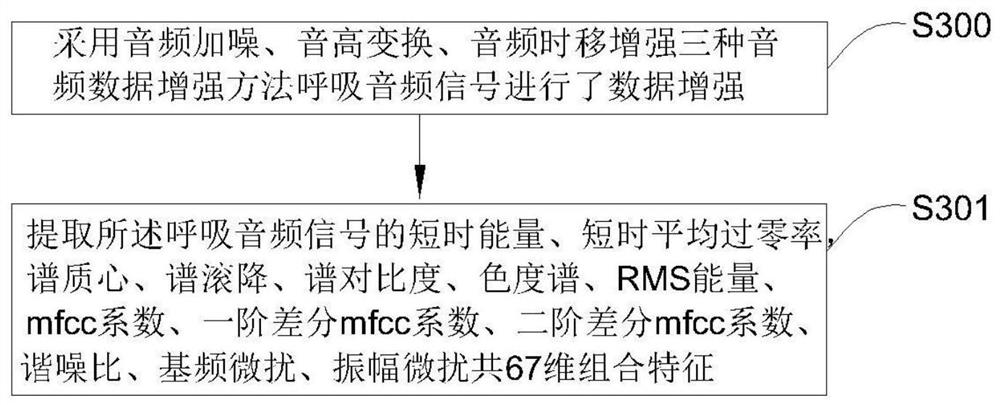Breathing sound classification method based on deep learning
A classification method and deep learning technology, applied in speech analysis, instruments, etc., can solve the problems of model instability, easy to fall into local extreme points, poor classification effect, etc., to improve the classification recognition rate, reduce manpower, improve The effect of efficiency
- Summary
- Abstract
- Description
- Claims
- Application Information
AI Technical Summary
Problems solved by technology
Method used
Image
Examples
Embodiment Construction
[0036] In order to explain in detail the technical content, structural features, achieved goals and effects of the technical solution, the following will be described in detail in conjunction with specific embodiments and accompanying drawings.
[0037] see figure 1 As shown, it is a deep learning-based breath sound classification method method flow Figure 1 , which includes the following steps:
[0038] S1. Collect audio signal samples of breath sounds, and preprocess the audio signal, wherein
[0039] S2. According to the breath sound cycle text information, perform cycle division on the audio signal in step S1 to obtain a breath sound signal with a set cycle;
[0040] S3. Perform data enhancement on the breathing audio signal in the data set by an audio data enhancement method, and extract the acoustic features of the breathing audio signal;
[0041] S4. Using the acoustic features extracted in step S3, constructing a type recognition model to classify and recognize bre...
PUM
 Login to View More
Login to View More Abstract
Description
Claims
Application Information
 Login to View More
Login to View More - R&D
- Intellectual Property
- Life Sciences
- Materials
- Tech Scout
- Unparalleled Data Quality
- Higher Quality Content
- 60% Fewer Hallucinations
Browse by: Latest US Patents, China's latest patents, Technical Efficacy Thesaurus, Application Domain, Technology Topic, Popular Technical Reports.
© 2025 PatSnap. All rights reserved.Legal|Privacy policy|Modern Slavery Act Transparency Statement|Sitemap|About US| Contact US: help@patsnap.com



